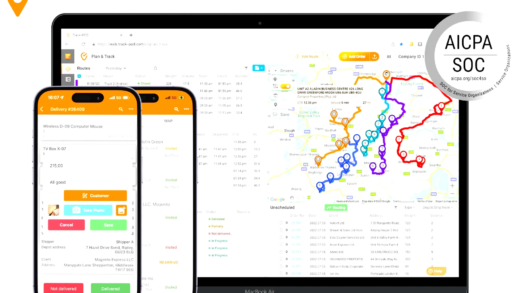This article provides a comprehensive guide to bird identification for beginners. Key features include understanding color, size, and beak shape. Tips for distinguishing similar species and using field guides effectively are included. Common mistakes are discussed, along with practical advice for improving identification skills and considering seasonal changes in bird behavior.
Key Features for Bird Identification
Bird identification begins with understanding key features. The most important aspects to consider are color, size, and beak shape. These characteristics can give significant clues about the species you’re observing.
- Color: Note the overall color and any distinctive markings. For instance, a bright red cardinal is easy to spot among duller birds.
- Size: Compare the bird’s size with familiar objects like a sparrow or a crow. This can help narrow down your options.
- Beak Shape: The shape of a bird’s beak often indicates its diet. A long, slender beak may belong to a hummingbird, while a thick, conical beak is typical of finches.
By focusing on these features, you can start to piece together the identity of the bird. It’s like putting together a puzzle where each piece helps to reveal the bigger picture.
Distinguishing Similar Species
Identifying birds can become tricky when species look alike. To effectively distinguish between similar birds, consider the following tips:
- Field Marks: Look for subtle differences in color patterns or markings that set species apart. For example, the American Robin has a red-orange belly, while the European Robin has a rounder shape and a more subdued color.
- Behavior: Observe how the birds behave. Some species are more social, while others are solitary. Behavior can be a telling sign.
- Location: Know the typical habitats of the species. Some birds prefer wetlands, while others thrive in wooded areas.
Taking notes on these characteristics can help avoid confusion and improve your bird identification skills.
Tools for Bird Identification
Several tools can assist in bird identification. Here’s an overview of useful resources:
- Mobile Apps: Apps like Merlin Bird ID and BirdNET can help identify birds based on photos or songs.
- Field Guides: Physical or digital field guides provide valuable information on bird species, including images and descriptions.
- Binoculars: A good pair of binoculars enhances your ability to see birds up close without disturbing them.
Utilizing these tools can significantly enhance your birding experience. They make identifying birds easier and more enjoyable, turning your outdoor adventures into a fun learning opportunity.
Bird Calls and Songs
Bird calls and songs play a crucial role in bird identification. Listening to these sounds can provide valuable clues about a bird’s identity. The bird calls are short, often sharp sounds, while bird songs are longer and more melodious. By recognizing these vocalizations, you can significantly improve your identification skills.
- Types of Calls: Each species has its unique set of calls. For example, the Common Loon has a haunting, yodel-like call, whereas the Chickadee is known for its cheerful “chick-a-dee-dee-dee” sound.
- Listening Techniques: Pay attention to the context in which you hear the calls. Are they alarm calls or mating songs? This can help you narrow down species.
- Apps for Bird Sounds: Utilize apps like Merlin Bird ID or BirdNET to familiarize yourself with bird sounds. They often provide audio samples for different species.
By honing your listening skills, you’ll be able to identify birds not just by sight, but by sound as well. It’s like being able to recognize a friend’s voice in a crowded room.
Habitat Identification
Understanding a bird’s habitat is vital for effective bird identification. Different species thrive in specific environments, and knowing these habitats can help you identify birds more accurately. The habitat identification encompasses various factors such as vegetation type, water sources, and elevation.
- Types of Habitats: Birds can be found in diverse habitats, including forests, wetlands, grasslands, and urban areas. For instance, the Red-winged Blackbird is commonly found in marshes, while the American Woodcock prefers wooded areas.
- Vegetation and Resources: Note the types of plants and trees in the area. Some birds are specialized feeders and rely on specific plants for food or nesting.
- Seasonal Changes: Bird populations often shift with seasons. Certain birds may migrate to warmer climates in winter, while others may breed in specific habitats during spring.
Recognizing the relationship between birds and their habitats can enhance your birding experience. It’s like knowing where to find your favorite dish in a big restaurant.
Size and Shape Matters
When it comes to bird identification, understanding a bird’s size and shape is essential. These physical characteristics can greatly assist in distinguishing between species. The size and shape of a bird can inform you about its identity more than you might think.
- Size Comparison: Use familiar objects as references. For example, compare a bird to a common pet or household item to gauge its size. A Blue Jay is about the size of a crow, while a Goldfinch is closer to a sparrow.
- Shape Features: Pay attention to the overall shape of the bird. Is it stocky or slender? Does it have a long tail or a short, rounded one? These details can help differentiate species.
- Wing and Tail Shapes: The shape of wings and tails can also indicate a bird’s flight style and behavior. For instance, long wings suggest gliding, while short, rounded wings are common in birds that maneuver quickly through dense vegetation.
By observing these size and shape characteristics, you can refine your identification skills. It’s much like identifying a car model based on its shape and size—details matter!
Using Field Guides Effectively
Field guides are essential tools for bird identification. They provide a wealth of information about various bird species, their characteristics, and habitats. Here’s how to use them effectively:
- Choose the Right Guide: Select a field guide that covers birds in your region. Some guides focus on specific areas, while others offer a broader overview.
- Familiarize Yourself with Layout: Most guides categorize birds by family or color. Spend some time flipping through the pages to understand how to navigate the guide quickly.
- Use Visual Aids: Pay attention to illustrations and photos. Comparing these images with the birds you observe will help you make accurate identifications.
- Read Descriptions Carefully: Take note of distinguishing features, such as size, color patterns, and vocalizations, that can aid in identification.
By using field guides effectively, you can enhance your birding experience and improve your identification skills.
Avoiding Common Mistakes
Bird identification can be challenging, and mistakes are common among beginners. Here are some pitfalls to avoid:
- Ignoring Size: Always consider the size of the bird in comparison to familiar objects. Misjudging size can lead to incorrect identification.
- Overlooking Behavior: Behavior is a significant clue. For instance, if a bird is feeding on the ground, it may not be the same species as one you see in a tree.
- Relying Solely on Color: Color can vary significantly among individuals, especially in different lighting conditions. Always consider other features like markings and shapes.
- Neglecting Vocalizations: Failing to listen for bird calls and songs can limit your identification success. Sounds are often key to distinguishing between species.
By being aware of these common mistakes, you can sharpen your identification skills and enjoy birdwatching more.
Practicing Your Skills
Improving your bird identification skills takes practice. Here are some effective tips:
- Regular Observation: Spend time outdoors observing birds in different habitats. The more you watch, the better you’ll become at identifying them.
- Join Birdwatching Groups: Engaging with other birdwatchers can provide valuable insights and tips. You can learn from their experiences and share your own.
- Keep a Bird Journal: Document your sightings, including date, location, and observations. This practice will help reinforce your learning.
- Use Technology: Leverage apps and websites to enhance your learning experience. They can provide instant feedback and resources for identification.
Consistent practice will build your confidence and proficiency in bird identification.
Understanding Seasonal Changes
Seasonal changes can significantly impact bird identification. Here’s what to consider:
- Migratory Patterns: Many birds migrate seasonally. Knowing when certain species are present can help you plan your birdwatching outings.
- Breeding Colors: Some species exhibit different plumage during breeding season. For example, male birds may become more vibrant to attract mates.
- Habitat Shifts: Birds often change habitats based on the season. Understanding these shifts can help you locate them more effectively.
- Food Sources: Seasonal changes in food availability can affect bird behavior. Observing these patterns can provide insights into where to find certain species.
By considering seasonal changes, you can enhance your birdwatching experience and improve your identification skills.





Comments are closed.